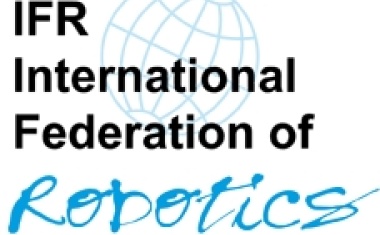Photonic chip for isolating light
A new study demonstrates a powerful way to isolate, or control the directionality of light.
Light plays a critical role in enabling 21st century quantum information applications. For example, scientists use laser light to precisely control atoms, turning them into ultra-sensitive measures of time, acceleration, and even gravity. Currently, such early quantum technology is limited by size – state-of-the-art systems would not fit on a dining room table, let alone a chip. For practical use, scientists and engineers need to miniaturize quantum devices, which requires re-thinking certain components for harnessing light. Now IQUIST member Gaurav Bahl and his research group have designed a simple, compact photonic circuit that uses sound waves to rein in light. The new study demonstrates a powerful way to isolate, or control the directionality of light. The team’s measurements show that their approach to isolation currently outperforms all previous on-chip alternatives and is optimized for compatibility with atom-based sensors.

“Atoms are the perfect references anywhere in nature and provide a basis for many quantum applications,” said Bahl. “The lasers that we use to control atoms need isolators that block undesirable reflections. But so far the isolators that work well in large-scale experiments have proved tough to miniaturize.” Even in the best of circumstances, light is difficult to control. Controlling light within large quantum devices is normally an arduous task that involves a vast sea of mirrors, lenses, fibers, and more. Miniaturization requires a different approach to many of these components. In the last several years, scientists and engineers have made significant advances in designing various light-controlling elements on microchips. They can fabricate waveguides, which are channels for transporting light, and can even change its color using certain materials. But forcing photons to move in one direction while suppressing undesirable backwards reflections is tricky.
“An isolator is a device that allows light to pass uninterrupted one way and blocks it completely in the opposite direction,” said Benjamin Sohn, a former graduate student. “This unidirectionality cannot be achieved using just any common dielectric materials or glasses, and so we need to be a little more innovative. We also want the isolator to operate at wavelengths of light tuned to atomic sensors, which can be hard even at large scales.” In typical experiments, the best tool for achieving unidirectionality uses magnets. For example, nearly every laser has a magneto-optic isolator that lets light exit the laser but prevents it from traveling backwards, which would mess with laser functionality. While even lasers can be miniaturized, shrinking conventional isolators is problematic for two reasons. First, in compact devices, magnetic fields would negatively affect nearby atoms. Second, even if there was a way to get around this, the materials that are inside the isolator do not work as well on the smaller length scales on a chip.
Bahl’s team demonstrated a new non-magnetic isolator that turns out to be simple in design, uses common optical materials, and is easily adaptable for different wavelengths of light. “We wanted to design a device that naturally avoids loss, and the best way to do that is to have light propagate through nothing. The simplest bit of nothing that can still guide photons along a controlled path is a waveguide, which is a very basic component in photonic circuits,” said Bahl. In a complete atom-based system, the waveguide would steer laser light through a series of elements to a small chamber containing atoms. With this in mind, the team has optimized their chip for use with 780 nanometer light, which is the wavelength needed to configure common rubidium-based sensors.
That is only the first half of the design because for isolation, the light must be simultaneously blocked in the opposite direction. Previously, the team showed that they could launch sound waves into a photonic circuit to break the symmetric flow of light. In the new study the team turned this idea into a demonstration of a functional chip element. The complete photonic isolator contains a waveguide and an adjacent ring resonator, which looks like an oblong racetrack. Normally, incoming light would just pass from the waveguide into the resonator, irrespective of its direction, thus blocking all light flow. But when the team applied sound waves to the ring, the resonator only captured light that was moving backwards through the waveguide. In the forward direction, light passed through the waveguide unimpeded, as if the resonator was simply not there.
The team’s measurements revealed that nearly every photon moves through the waveguide in the forward direction, while having only one-in-ten-thousand chance of making it through backwards. This means that the design reduced losses, or undesirable light absorption, to nearly zero, which has been a long-standing problem with previous on-chip isolators. The data show that the new devices exhibit record-breaking performance for on-chip isolation and operate as well as the larger magnet-based devices. In addition, the approach is flexible and can used for multiple wavelengths without changing the starting material.
“The simplicity in fabrication is key – with our approach, you could print photonic isolators that work well for whatever wavelength you need, all on the same chip at the same time. This is just not possible with other approaches today,” said Ogulcan Orsel, graduate student in Electrical Engineering. This could make the new design useful for other applications, like quantum computing, where stray, uncontrolled magnetic fields as well as unwanted light can erode overall device performance. (Source: U. Illinois)











